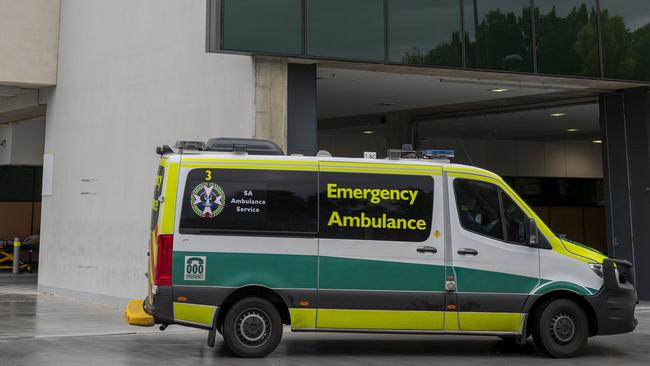Ambulance ramping figures continue to rise in June
Ambulance ramping rose again in June as the state government grapples with fulfilling its key election promise – but will giving pharmacists more power help?
SA News
Don't miss out on the headlines from SA News. Followed categories will be added to My News.
Ambulance ramping is climbing again, rising to 3105 hours lost in June compared with 2972 hours lost in May, which itself was a 5.8 per cent rise on the previous month.
As the state government wrestles to fulfil its core election promise to “fix ramping” – which it has since modified to “reduce ramping” – hours lost as ambulances get stuck in hospital carparks remain stubbornly hard to cut.
Ramping rose in all hospitals except Flinders Medical Centre, which carved 24 hours off its May figure for a total loss in June of 855 hours.
The flagship Royal Adelaide Hospital saw 1115 hours lost, up 25 hours.
June’s 3105 hours lost compares with 3854 hours lost to ramping in June 2022, and to the record 3968 hours lost in March.

The Opposition was quick to tweet that despite Labor’s promise “to ‘fix ramping’ June data released Friday shows ramping has more than doubled since the 2022 State election.”
BREAKING: Despite @PMalinauskasMP's promise to "fix ramping", June data released today show ramping has more than doubled since the 2022 State Election. #saparli
— SA Liberal Media (@SALibMedia) July 7, 2023
However, government officials disputed this, noting ramping in March 2022, when the Liberals lost power at the March 19 election, hit 2712 hours.
Ambulance response times in June were 69.2 per cent for priority 1 cases within eight minutes, well ahead of the target of 60 per cent, but 57.5 per cent for priority 2 patients within 16 minutes, which was behind the 90 per cent target.
Health Minister Chris Picton said ambulance response times for both priority 1 and 2 cases had improved since January 2022, and noted the latest ramping figures were an almost 22 per cent drop on March’s record figure.
“It is pleasing to see continuing progress in ambulance response times so that paramedics can reach patients in emergencies sooner but we know there is still more work to be done,” he said.
“We are getting on with improving patient flow at the same time as we build the extra bed capacity we need.”
However Opposition health spokeswoman Ashton Hurn said ramping was worse than anytime under the former Liberal government.
“Despite promising to fix ramping, South Australians are more likely to be ramped under this Labor Government than at any other point in our state’s history,” Ms Hurn said.
“Labor promised South Australians they had a plan to fix ramping, and yet figures show that on Peter Malinauskas’ watch it’s more than doubled.”
Mr Picton on Friday announced a new measure to free-up patient flow at Lyell McEwin Hospital.
In a first for South Australia, pharmacists at the hospital will be authorised to prescribe certain medications, to free up doctors’ time and help improve patient flow.
Pharmacists authorised by the Chief Medical Officer will work with doctors to undertake a medication review and prescribe medications for nursing staff to administer, to help inpatients move through the emergency department and wards faster.
The trial will start within weeks with four pharmacists trained to do the prescribing of Schedule 2, 3 and 4 medicines, which include medicines for blood pressure, cholesterol, pain relief and diabetes.
The new arrangement does not apply to discharge medication, with doctors required to prescribe all discharge medication under the Pharmaceutical Benefits Scheme.
The trial mirrors a model operating successfully in Victorian hospitals for several years, with evidence showing an 10 per cent cut in inpatient length of stay and a reduction in medication errors.
Mr Picton noted the trial follows a recent separate $27m budget commitment to roster more doctors, pharmacists, physios and other staff on weekends to speed patient discharges and reduce Monday bed-block.
“This new hospital pharmacy prescribing partnership is another innovative measure we are taking to improve patient flow and ultimately free up beds sooner.” he said.




